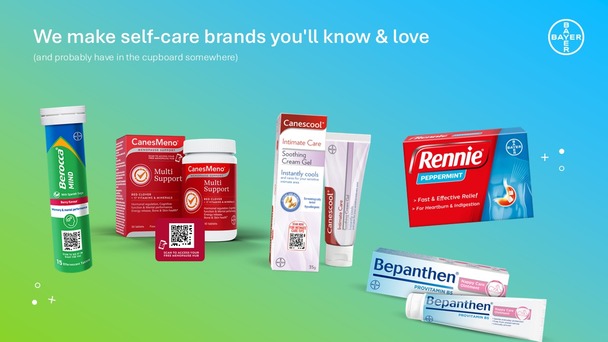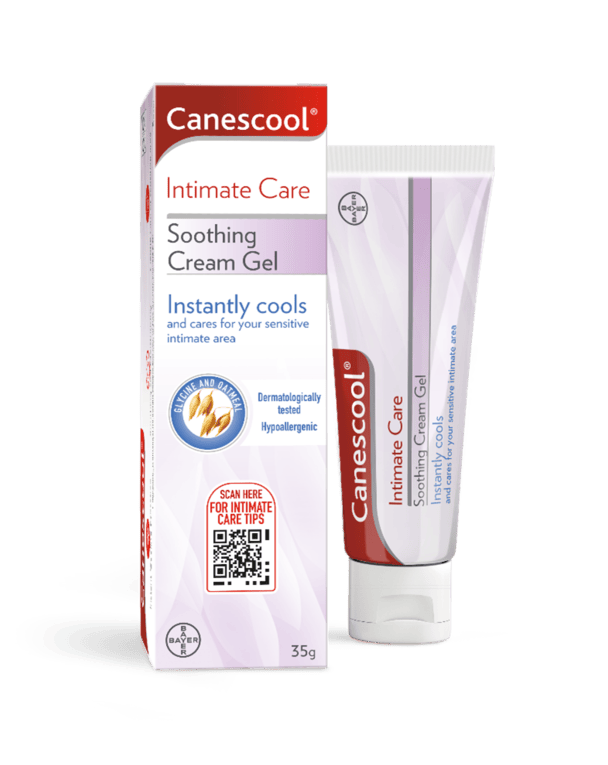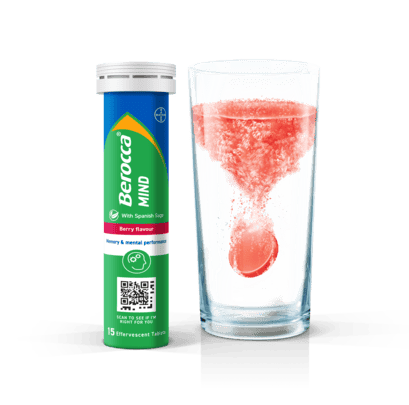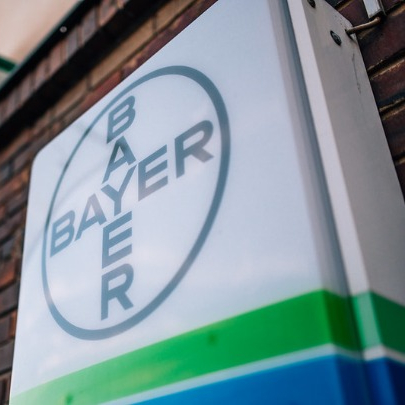At GS1 UK, we believe standards have the power to build a fairer, more informed and inclusive world. For Bayer, a global leader in consumer healthcare, this belief aligns closely with their purpose: health for all, hunger for none.
So, when Bayer Consumer Health saw the opportunity to innovate through connected packaging, it became clear that this wasn't just about digital transformation; it was about delivering real-world benefits for consumers.
Working with Zappar and Digimarc, Bayer Consumer Health set out to explore how Accessible QR codes (AQR), specifically in the form of QR codes powered by GS1, could bring their brands closer to the people who use them while also making their packaging more inclusive, more sustainable and more valuable to their consumers.
Identifying the opportunity
With a diverse brand portfolio that includes Canesten, Berocca, Rennie, Clarityn and Bepanthen, Bayer Consumer Health recognised the growing importance of digital experiences in the consumer healthcare space. They also recognised a broader opportunity: to help more people access vital product information, especially for those who are blind or have low vision.

Traditional paper leaflets, often tucked inside boxes or printed in small type, pose challenges for many consumers, especially the visually impaired. At the same time, the consumer healthcare industry is looking to reduce unnecessary packaging and make information easier to update, access and understand.
That's where QR codes powered by GS1, provided by Digimarc, come in. By embedding trusted product identifiers such as the Global Trade Item Number (GTIN) into a scannable, digital format, these next-generation barcodes make it possible to connect every product to rich, real-time information and services, all accessible via a simple smartphone scan.
Overcoming challenges
As with any digital transformation initiative, there were important decisions to be made early on.
First, Bayer Consumer Health needed to identify the right partners. They brought in Zappar for their expertise in connected packaging and immersive digital experiences and worked together to shape the consumer journey. This collaborative approach was key to ensuring the end experience delivered real value to consumers. Digimarc was brought in for their experience servicing digital product identities based on the GS1 digital link standard at scale and their integration with Zappar’s AQR technology.
Next, they selected two new product development (NPD) SKUs for pilot testing—Canescool® Soothing Cream Gel and Berocca Gummies. By focusing on new products, Bayer Consumer Health could explore the technology with minimal disruption to existing operations, while giving itself space to test, learn and iterate.
A key challenge was ensuring the calls to action used on-pack were simple, clear and compelling. If consumers were going to scan a QR code, the value exchange needed to be obvious. What would they get in return? Would it be helpful? Would it be accessible?
To answer those questions, Bayer Consumer Health assembled a cross-functional team spanning brand, digital experience, medical, regulatory and product functions. Their goal was to design scan experiences that were genuinely useful, whether that meant replacing a printed leaflet, offering usage guidance or giving consumers added confidence in what they were buying.
Bringing the solution to life
Bayer Consumer Health's solution was built around the Accessible QR (AQR) code. Invented by Zappar, an AQR code is a standard QR code enhanced with a dot-dash pattern around one corner, making it easier to detect and scan from a distance. When used with existing accessibility apps, it provides blind and low vision users with spoken or enlarged on-pack information through their device's accessibility features. AQRs contain standard GS1 digital link identities delivered by Digimarc, which combine the globally recognised GTIN with the ability to carry dynamic, real-time data on the web.

On the Canescool® Soothing Cream Gel, Bayer Consumer Health took the bold step of removing the paper leaflet altogether.
Instead, the AQR code is linked directly to a digital version of the patient information leaflet (PIL), hosted on an accessible landing page. This move supported their sustainability goals by reducing their reliance on paper while improving accessibility for consumers using assistive apps.
Meanwhile, Berocca Gummies used the AQR code to deliver accessible product information for people who are blind or have low vision, alongside branded content for sighted users, giving consumers a more engaging and inclusive experience at the point of use.
These AQR codes were far more than simple links. They were smart, structured data carriers, built on GS1's globally interoperable standards framework. This meant they could be scanned by any consumer using a smartphone, had the ability to be read at the point of sale and could also help unlock future capabilities such as improved supply chain traceability, batch-level tracking and regulatory compliance.
Delivering measurable benefits
The impact of Bayer Consumer Health's pilot with QR codes powered by GS1, enhanced with an accessibility layer through Zappar’s AQR solution, has been nothing short of impressive. Scan rates across the connected packs significantly exceeded industry benchmarks. Berocca Mind, for example, achieved a total average scan rate that was over 35 per cent higher than the industry benchmark, demonstrating that when consumers are offered a clear and compelling reason to engage, they do so willingly and enthusiastically.
This increased engagement translated directly into commercial value. By collecting and applying first-party data from these scans, Bayer Consumer Health achieved a 30 per cent uplift in return on investment. The quality of the data enabled more targeted media activation and more informed decision making, delivering measurable improvements in marketing performance.
Crucially, the connected experiences also influenced behaviour. Products featuring the new AQR codes generated twice the level of purchase intent compared to control groups, confirming that when consumers are provided with useful, accessible content at the just the right moment, it boosts confidence and encourages action.
But perhaps the most meaningful result came in the form of accessibility. For the first time, blind and low vision consumers could independently access vital product information through assistive technologies, simply by scanning the on-pack AQR code with their smartphone. In doing so, Bayer Consumer Health took a significant step towards making consumer healthcare more inclusive and showed how digital innovation, when grounded in global standards, can deliver genuine, real-world impact.

When Bayer Consumer Health first began exploring connected packaging a few years ago, the ambition went far beyond digital innovation — it was about redefining how people experience our brands. By turning every pack into a meaningful touchpoint, we’re empowering consumers with instant access to trusted health information, personalised support, and stories that reflect our purpose. Working with GS1 UK, Zappar and Digimarc has been an incredible journey — helping us make our products more human, more sustainable, and more connected to the people we serve.’’
Marta Bukala
Head of digital, Bayer Consumer Health UK & Ireland

Looking ahead
Following the success of the pilot, Bayer Consumer Health is now scaling up. Products across the portfolio already feature AQR codes or are currently in production, with plans in place to transition all upcoming new product development to QR codes powered by GS1 as standard.
Bayer Consumer Health is now actively collaborating with GS1 UK to explore the full potential of AQR codes. This includes exploring new use cases, their ability to carry additional offline data, such as expiration dates and batch numbers, and how they could be used to meet evolving regulatory requirements and build more responsible, transparent supply chains.
While Bayer Consumer Health's connected packaging journey is still evolving, it is already proving how collaboration, interoperable standards and technology can deliver value well beyond the pack


